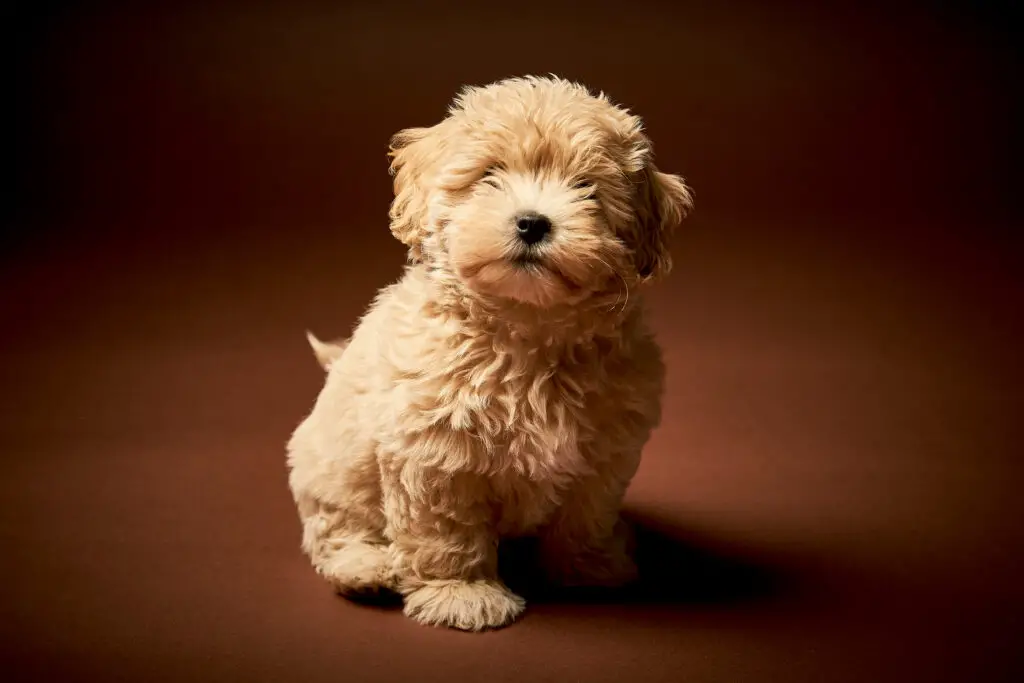Our website is supported by our users. We sometimes earn money when you click an affiliate link and make a purchase. This is at no extra cost to you and helps us to create quality content. Thank you for your support. For all that have shown us such wonderful support, we thank you from the bottom of our hearts!
The Maltipoo is a hybrid breed that has gained popularity in recent years due to their adorableness and friendly temperament.
They are a designer breed that is a cross between a Maltese and a Toy Poodle or Miniature Poodle.
This results in a small and affectionate dog that is perfect for families or individuals looking for a loyal companion.
Because they are a mixed breed dog, they are not recognized by the American Kennel Club, they are, however, recognized by the Designer Kennel Club.
As one of the smaller dog breeds, they are an excellent choice for apartment dwellers as they don’t need much space.
In this article, we will delve into the history, physical characteristics, temperament, health issues, grooming, and owning a Maltipoo.
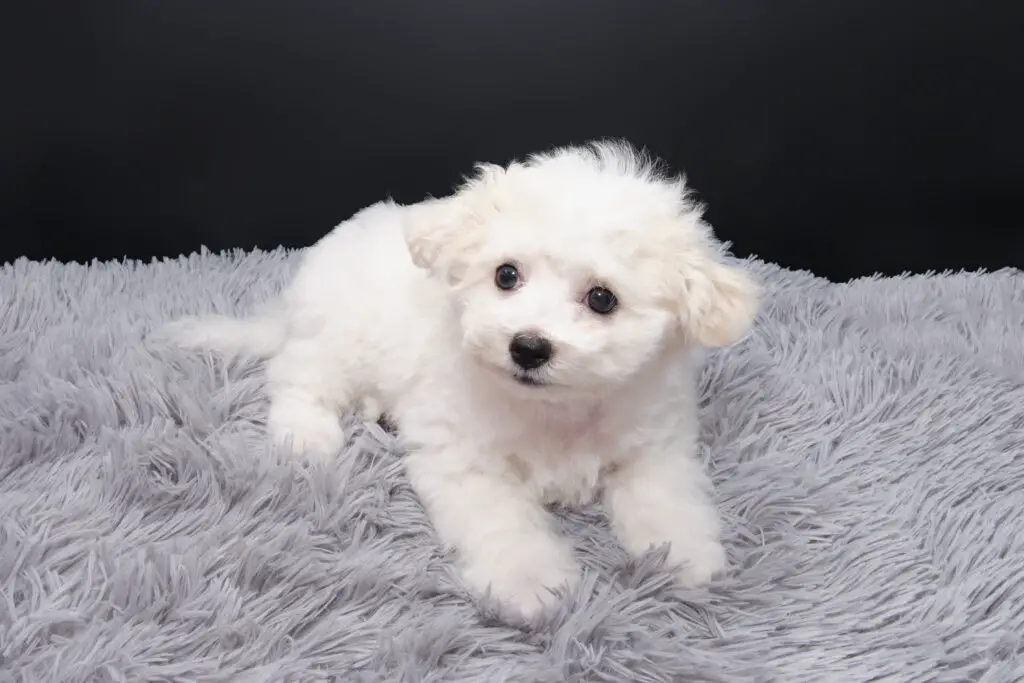
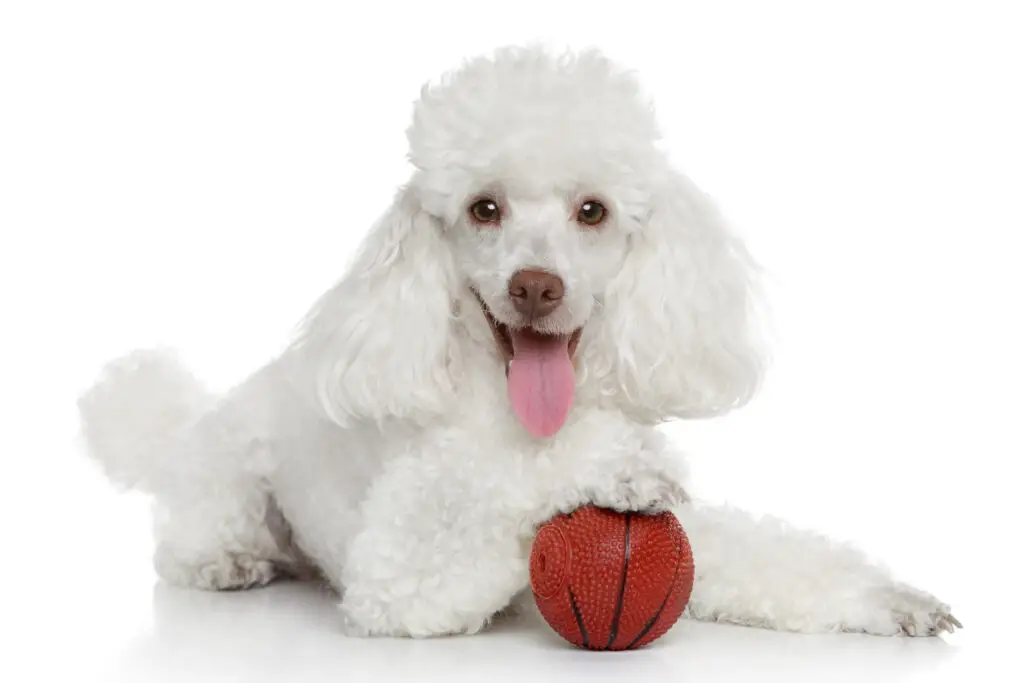
History of the Maltipoo
The Maltipoo is a relatively new breed, with its origin dating back to the 1990s in the United States. They were first bred to be a hypoallergenic and low-shedding dog that could serve as a companion for allergy sufferers.
Their popularity has been on the rise ever since, and they have become a sought-after breed among dog lovers worldwide.
Physical Characteristics of the Maltipoo
Height: Maltipoos are small dogs, standing at an average height of 8-14 inches.
Weight: They are also lightweight, with an average weight of 5-20 pounds.
Coat Color: The Maltipoo coat can come in a variety of colors, including white, cream, black, brown, and gray.
Coat Type: They have a soft coat and coat types can vary from curly to wavy, depending on the traits inherited from their parent breeds.
Life Span: The life span of a Maltipoo ranges from 10-15 years, making them a long-lived breed.
Additionally, both the Maltese and the Poodle are hypoallergenic.
Related Article:
Teacup Pomeranian: Facts You Need to Know About these Adorable Forever Puppies
Temperament & Training of the Maltipoo
Maltipoos are known for their friendly and affectionate temperament, making them a great option for families with children or individuals who want a loyal companion dogs.
They are intelligent and friendly dogs but they require patience and consistent training starting at a young age. Maltipoos are also known to have a stubborn streak, so training them may take more time and effort than other breeds.
As with any dog, they flourish with positive reinforcement techniques.
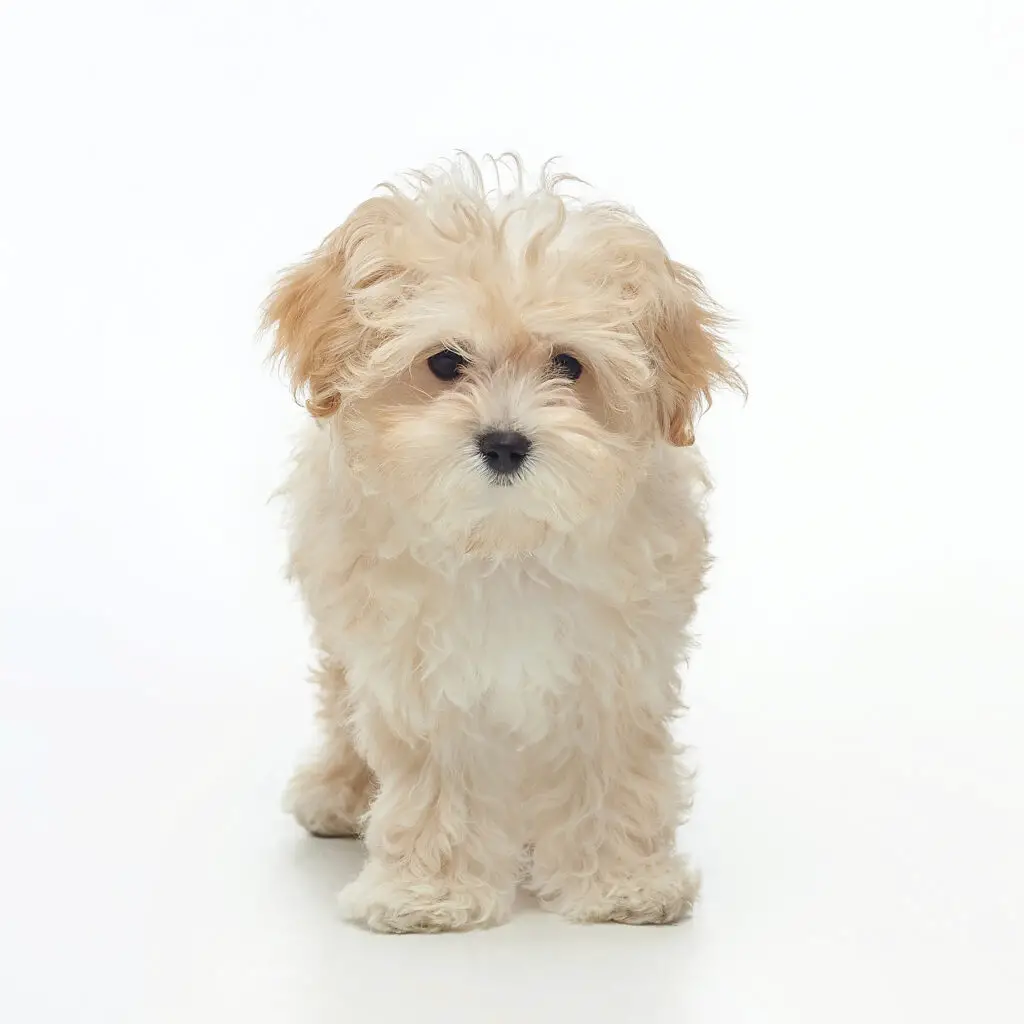
Health Issues of the Maltipoo
Maltipoos, like all hybrid breeds, inherit their traits from their parent breeds. It is essential to know the potential health problems of the parent breeds to understand the health issues that Maltipoos may face.
Here are some of the common health issues of the parent breeds:
Maltese Parent Health Issues
Dental Issues
Maltese dogs are prone to a variety of dental problems, including tooth decay, gum disease, and tooth loss. These issues can be caused by a variety of factors, including genetics, diet, and poor oral hygiene.
Small breeds like Maltese are especially prone to dental problems due to their small mouths and teeth.
To prevent dental problems in Maltese dogs, it is important to establish a regular dental care routine that includes daily brushing, regular dental checkups and cleanings with a veterinarian, and feeding a high-quality diet that promotes dental health.
Owners should also provide their Maltese with appropriate chew toys and avoid giving them sugary or starchy treats.
Common signs of dental problems in Maltese dogs include bad breath, tooth discoloration, bleeding gums, and difficulty eating. If left untreated, dental problems can lead to pain, infection, and even tooth loss.
Therefore, it is important to take preventive measures and seek prompt veterinary care if any signs of dental problems are observed.
Eye Problems
Maltese dogs are prone to several eye problems due to their unique eye structure and genetics. Some common eye problems that Maltese dogs may experience include cataracts, corneal ulcers, and progressive retinal atrophy.
Cataracts are a clouding of the eye’s lens, which can cause vision impairment or blindness.
Corneal ulcers are open sores on the cornea that can be caused by injury, infection, or other underlying health conditions.
Progressive retinal atrophy: See Below in the shared health issues
Owners should monitor their Maltese dogs for any signs of eye problems, such as excessive tearing, redness, cloudiness, or squinting.
Regular veterinary check-ups can also help detect any potential eye problems early on.
Treatment for eye problems in Maltese dogs depends on the specific condition and severity of the problem. Some treatments may include medication, surgery, or management of underlying health conditions.
Early detection and treatment can help prevent further vision loss and improve the overall quality of life for Maltese dogs.
Poodle Parent Health Issues
Hip Dysplasia
Poodles are prone to hip dysplasia, a condition where the hip joint does not develop correctly.
Progressive Retinal Atrophy (PRA): See below in the shared health issues
Skin Allergies
Poodles are prone to skin allergies, which can cause itching and discomfort.

Shared Health Issues for both breeds
White Shaker Syndrome is a condition that primarily affects small dog breeds, including Maltese and poodles. It is characterized by generalized tremors that affect the entire body and can be quite severe, causing the dog to shake uncontrollably.
The exact cause of White Shaker Syndrome is not known, but it is believed to be an autoimmune disorder, where the dog’s immune system mistakenly attacks the body’s own tissues.
The symptoms of White Shaker Syndrome usually appear suddenly and can be quite alarming to pet owners. The dog may show signs of weakness, lethargy, and an inability to walk or stand normally.
In some cases, the tremors may be so severe that the dog is unable to eat or drink. The tremors tend to worsen with excitement, stress, or physical activity and may lessen during periods of rest.
Symptoms of White Shaker Syndrome:
- Tremors/shaking that worsen with excitement but abate during rest
- Weakness
- Lethargy
- Inability to walk or stand normally
In extreme cases:
- Inability to eat or drink
The diagnosis of White Shaker Syndrome is usually based on the dog’s symptoms, physical examination, and ruling out other possible causes of tremors. Blood tests and imaging studies may be used to rule out other conditions that can cause similar symptoms.
Treatment for White Shaker Syndrome typically involves the use of corticosteroids, which work to suppress the immune system and reduce inflammation.
Other medications may be used to help control the tremors and improve the dog’s overall condition. In some cases, the use of a calming agent or anti-anxiety medication may be helpful in reducing stress and anxiety, which can exacerbate the tremors.
While White Shaker Syndrome is a chronic condition that requires ongoing management, most dogs can lead a relatively normal life with appropriate treatment and care.
It is important for pet owners to work closely with their veterinarian to monitor their dog’s condition and adjust treatment as needed.
Related Article:
The Doberdoodle: When a Doberman and a Poodle Have Puppies
Another health issue that the Poodle and the Maltese share is Luxating Patella or Patellar Luxation
Luxating Patella or Patellar Luxation
Luxating patella, also known as a floating kneecap, is a common orthopedic condition that affects both Maltese and Poodles.
The patella is a small bone that sits in front of the knee joint, and when it luxates, it moves out of its normal position, causing pain, discomfort, and difficulty walking.
In Maltese, luxating patella is one of the most common inherited orthopedic conditions. The condition is caused by a genetic defect that affects the structure of the knee joint.
The severity of the condition can vary, with some dogs experiencing only mild discomfort, while others may require surgical intervention.
Poodles are also prone to luxating patella, with toy and miniature Poodles being the most affected. Like in Maltese, the condition is also caused by a genetic defect.
Poodles with luxating patella may limp, have difficulty standing up, or be reluctant to exercise.
Diagnosis of luxating patella in Maltese and Poodles is made by a veterinarian through a physical exam and imaging tests, such as X-rays. Treatment options depend on the severity of the condition.
Mild cases may be managed with medication and physical therapy, while severe cases may require surgery to realign the kneecap and stabilize the joint.
Prevention of luxating patella in Maltese and Poodles can be achieved through responsible breeding practices. Breeders should screen their dogs for the condition before breeding and avoid mating dogs with a history of luxating patella.
Owners can also help prevent the condition by keeping their dogs at a healthy weight and providing them with regular exercise.
Finally, there is one more major health issue facing both Maltese and Poodle:
Progressive Retinal Atrophy (PRA)
Progressive Retinal Atrophy (PRA) is a group of genetic eye diseases that affect the retina in dogs, including the Maltese and Poodle breeds. PRA causes the degeneration of the retina, which leads to progressive vision loss and eventual blindness.
In Maltese dogs, PRA is an inherited condition that can manifest in Maltese dogs as early as 2-3 years of age, and signs can include night blindness, dilated pupils, and a decrease in visual acuity. As the disease progresses, affected dogs may become completely blind.
In Poodles, PRA is also an inherited condition that is caused by a mutation in the gene that produces the photoreceptor protein.
There are two types of PRA that commonly affect Poodles – Progressive Rod-Cone Degeneration (PRA-PRCD) and Progressive Retinal Atrophy, Progressive rod-cone dysplasia (PRA-CRD4).
PRCD typically manifests in Poodles between 3 and 5 years of age, and PRA-CRD4 can appear in Poodles as early as 2 years of age.
Symptoms of PRA in Poodles include night blindness, decreased visual acuity, and a loss of peripheral vision.
Unfortunately, there is no cure for PRA in either Maltese dogs or Poodles. However, affected dogs can still have a good quality of life with proper care and management.
Owners can work with their veterinarian to develop a treatment plan that may include environmental modifications, such as keeping the house free of obstacles and using sound cues to help guide the dog, and providing additional support and training to help the dog adjust to their blindness.
Additionally, genetic testing can help identify carriers and affected dogs to help prevent the spread of PRA in future generations of Maltese and Poodles.

Grooming Your Maltipoo
Maltipoos require regular grooming to keep their coat healthy and shiny. They have a low-shedding coat, which means that they are an excellent choice for people with allergies.
However, their coat requires regular brushing to prevent matting and tangling. It is also essential to keep their coat trimmed to maintain their appearance and prevent matting.
Brushing
One of the most important aspects of grooming your Maltipoo is brushing their coat. This breed has a long, soft, and curly coat that can easily become matted and tangled if not brushed regularly.
To keep their coat looking healthy and shiny, you should brush your Maltipoo at least once a day using a slicker brush.
Start by brushing the coat in the direction of hair growth, paying close attention to areas like the armpits, belly, and behind the ears, which tend to mat easily. If you encounter any tangles or mats, use a
dematting tool or mat splitter to gently remove them without hurting your dog’s skin.
Bathing
Another important aspect of grooming your Maltipoo is giving them regular baths. The frequency of bathing will depend on your dog’s lifestyle and activity level, but in general, you should aim to bathe your Maltipoo once every three to four weeks.
When bathing your Maltipoo, be sure to use a mild, dog-specific shampoo that is free of harsh chemicals or fragrances that could irritate their skin like this Burt’s Bees for Dogs Oatmeal Dog Shampoo With Colloidal Oat Flour & Honey, and make sure to rinse thoroughly to avoid any skin irritations.
Wet your dog thoroughly with warm water, then lather the shampoo into their coat, taking care to avoid their eyes, ears, and nose.
After rinsing thoroughly, wrap your Maltipoo in a towel and gently squeeze out any excess water. Use a blow dryer on a low setting to dry their coat, or allow them to air dry naturally. Be sure to brush their coat once it is completely dry to prevent matting.
Cutting Hair
Maltipoos have hair rather than fur, which means that their coat will continue to grow until it is cut. Depending on your dog’s preferences and your own personal style, you can opt to keep their coat long and flowing or trim it short for a more manageable look.
If you decide to cut your Maltipoo’s hair, it’s important to use sharp, high-quality scissors and to work carefully and slowly to avoid cutting their skin. For trimming around the face, ears, we like these GLADOG Professional Grooming Scissors for Dogs with Safety Round Tips.
As for clippers, we purchased these and used them for years oneisall Dog Shaver Clippers Low Noise Rechargeable Cordless Electric Quiet Hair Clippers. They were used on a Cocker spaniel with very curly hair and occasionally her fur would get caught in the length guards. We just removed it and tried again.
Clipping or Grinding Nails
Another important aspect of grooming your Maltipoo is clipping or grinding their nails. Overgrown nails can cause discomfort and pain for your dog, and can even lead to joint problems if left unchecked.
To clip your dog’s nails, use a sharp pair of nail clippers and trim just the tip of each nail, taking care not to cut into the quick, which is the pink part of the nail that contains blood vessels and nerves. If you accidentally cut the quick, apply a styptic powder or cornstarch to stop the bleeding.
Alternatively, you can use a grinding tool to smooth and shorten your dog’s nails without the risk of cutting the quick. If you’re not comfortable with clipping or grinding your dog’s nails yourself, you can always take them to a professional groomer or veterinarian for help.
But first, check out our article on How to Grind Your Dog’s Nails Safely.
To find the best grinder for your dog, check out this article on choosing a grinder.
Cleaning Your Maltipoo’s Ears
Maltipoos are prone to ear infections due to their floppy ears, so it’s important to keep their ears clean and dry to prevent bacteria and yeast from growing. To clean your dog’s ears, use a cotton ball or soft cloth soaked in a gentle ear cleaning solution, which can be purchased at most pet stores or prescribed by your veterinarian.
Or, you can use these convenient ear wipes. These are compact and good for travel.
Gently wipe the inside of each ear, taking care not to insert the cotton ball, wipe or cloth too deeply into the ear canal, which can cause injury. If you notice any redness, discharge, or a foul odor, your dog may have an ear infection and should be seen by a veterinarian.
Related article:
The Mini Bernedoodle: A Complete Guide for This Hybrid Breed
Brushing Teeth
Finally, regular teeth brushing is an important aspect of Maltipoo grooming. Just like humans, dogs can suffer from dental problems such as tooth decay, gum disease, and bad breath if their teeth are not properly cared for.
To brush your dog’s teeth, use a soft-bristled toothbrush and dog toothpaste, which can be found at most pet stores. Place a small amount of toothpaste on the brush, then gently brush your dog’s teeth in a circular motion.
Start by brushing just a few teeth at a time, gradually increasing the amount of teeth you brush as your dog becomes more comfortable with the process.
Ideally, you should brush your dog’s teeth at least once a day to keep their mouth healthy and clean.
These teeth wipes can make it easier to get around your dog’s little mouth to get where the brush cannot.
If your Maltipoo is resistant to having their teeth brushed, you can try using dental treats, chews, or toys to help clean their teeth.
One popular brand is GREENIES Original Regular Natural Dog Dental Care Chews. These contain wheat and wheat gluten which are possible allergens. Another brand that is popular is the Nylabone Nutri Dent Natural Dental Chew Treats, which also contains wheat.
Before giving your dog any treats, please be sure to check the ingredients. Experts have begun to isolate from products with ingredients that aren’t as healthy for dogs as first thought.
At this time, potato and pea protein are believed to cause adverse reactions. So until there is more information and finalized research, it may be a good idea to limit your dog’s exposure to these ingredients.
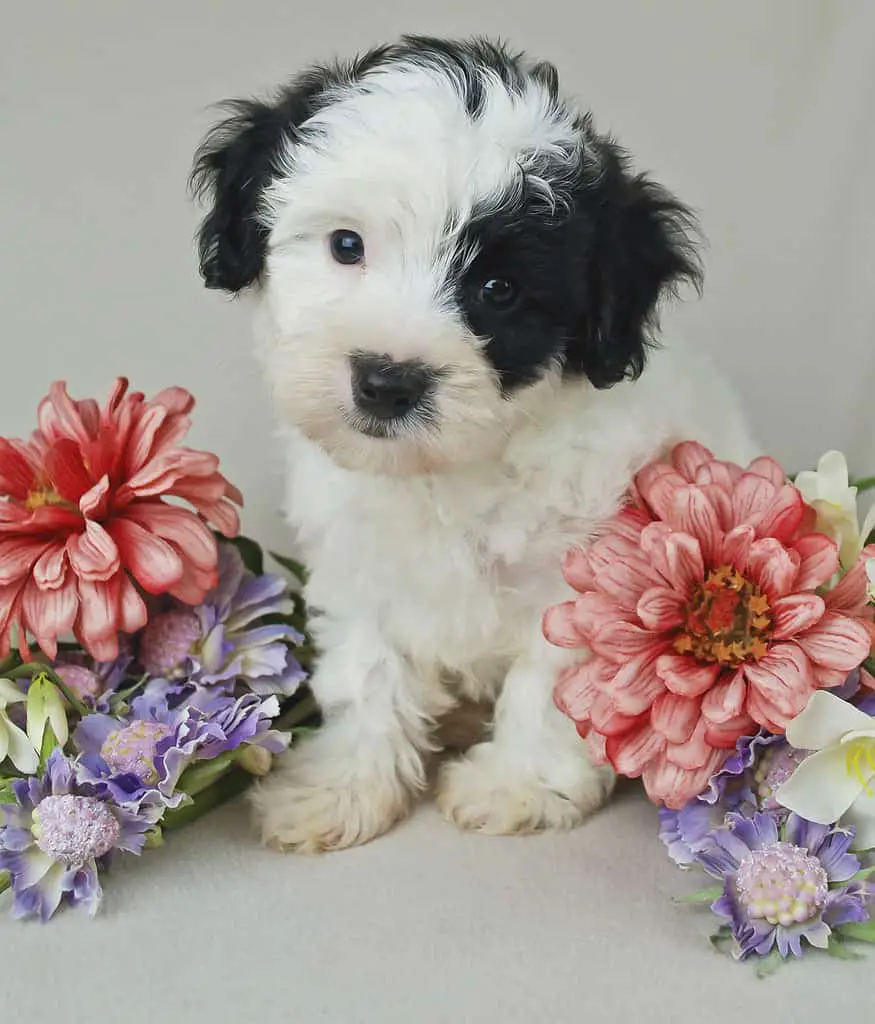
Owning a Maltipoo
- Special Traits: Maltipoos are a low-shedding, hypoallergenic dogs, making them an excellent choice for people with allergies. Though there is no such thing as a completely allergen-free dog, the Maltipoo sheds less dander.
- Cost of Purchase: The cost of purchasing a Maltipoo varies depending on the breeder, location, and demand. On average, a Maltipoo puppy can cost between $1,000 and $3,000.
- Maintenance Costs: The maintenance costs for a Maltipoo include special training, medical costs, and grooming costs. Maltipoos require regular check-ups with the veterinarian, vaccinations, and parasite prevention. Grooming costs can vary depending on whether the owner takes the dog to a professional groomer or does it themselves.
- Finding Breeders: It is important to find a reputable breeder when purchasing a Maltipoo to ensure that the puppy is healthy and has been properly socialized. Potential buyers should do their research and ask for references before committing to good breeders and the right puppy.
- Drawbacks of Owning: Maltipoos are a high-maintenance breed that requires regular grooming and attention. They are also prone to separation anxiety, so they may not be the best choice for people who are away from home for long periods.
- Fun Fact: Maltipoos are known for their love of playtime and are often called “designer lap dogs” due to their small size and affectionate nature.
FAQs on the Maltipoo?
Can I be allergic to Maltipoo?
Yes, people can still be allergic to a Maltipoo, although it is less common than being allergic to non-hypoallergenic dogs.
The term “hypoallergenic” refers to a breed of dog that is less likely to cause an allergic reaction in people who are sensitive to dog allergens.
These breeds are typically known to produce fewer allergens or shed less dander, which are the primary triggers of dog allergies.
However, even though hypoallergenic dogs may produce fewer allergens, they still produce some, and people with severe allergies may still have a reaction.
Additionally, some people may be allergic to other proteins or substances found in dog saliva or urine, which can also cause an allergic reaction regardless of the breed.
Therefore, if you have a dog allergy, it is always best to spend time with the specific breed of dog you are considering adopting to determine if you have a reaction before bringing the dog into your home.
What are the pros and cons of a Maltipoo?
Like any dog breed, Maltipoos have their own set of pros and cons that prospective owners should consider before adopting one.
Here are some of the most common pros and cons of owning a Maltipoo:
Pros:
- Hypoallergenic: Again, Maltipoos are often considered a good choice for people with allergies because they produce less dander than many other dog breeds.
- Affectionate: Maltipoos are known for their affectionate and playful personalities. They are often described as loyal, loving, and friendly.
- Trainable: Maltipoos are generally intelligent and can be easily trained with positive reinforcement methods.
- Size: Maltipoos are small dogs, typically weighing between 5 and 15 pounds. This makes them a good choice for people who live in apartments or who have limited space.
- Super cute!
Cons:
- Grooming: Maltipoos have a thick, curly coat that requires regular grooming to prevent matting and tangling. This can be time-consuming and expensive.
- Separation anxiety: Maltipoos are known for being attached to their owners and may experience separation anxiety when left alone for long periods of time.
- Health problems: Maltipoos are prone to certain health problems, such as dental issues, ear infections, and respiratory problems.
- Barking: Maltipoos can be vocal dogs and may bark excessively if not trained properly.
- Size: Though they are friendly pups, since Maltipoos are so small, they may not be suitable for families with young children.
Ultimately, the decision to adopt a Maltipoo should be based on your lifestyle, living situation, and personal preferences.
If you are willing to provide the necessary grooming and training, and if you are looking for an affectionate and playful companion, a Maltipoo could be a great choice for you.
The Bottom Line on the Maltipoo
In conclusion, the Maltipoo is a popular hybrid breed that is known for its adorable looks and friendly temperament. They are a low-shedding and hypoallergenic breed that is perfect for people with allergies.
However, they require regular grooming and attention, and potential owners should be prepared for the costs associated with owning a high-maintenance breed.
With proper care and attention, Maltipoos can make excellent companions for families or individuals looking for a loyal and affectionate pet.
Please read our Legal Disclaimer

